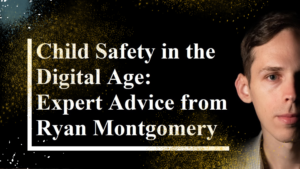There is a movement taking on all over the United States to make human trafficking prevention a top priority in local areas. Schools, youth service programs, juvenile corrections services, group homes, and other youth-oriented spaces are starting to realize how much power they may provide young people to protect themselves from exploitation.
Recognizing The Disguise
Psychological manipulation is the main tactic used by exploiters, including traffickers, to maintain control.
Through social media, in-person encounters at locations like school and the mall, and through the established connections that young people have in their families and communities, they enter the lives of vulnerable girls and boys.
The goal of an exploiter is to become the person that a young person wants in their life by getting to know their weaknesses.
After earning someone’s trust, exploitation starts.
These tools will enable the dialogue that both adults and children so desperately need to have in the regions they live.
The Five “disguises” that a person looking to take advantage of someone might use to win their trust are:
1 – Pretender – Someone who pretends to be something s/he is not, such as a boyfriend, a big sister, a father, etc.
2 – Provider – A person who offers to meet someone’s needs, such as providing them with clothing, food, a place to live, etc., or their wants, such as cool cell phones, purses, parties, etc.
3 – Promiser – A person who makes great-sounding promises about getting access to things like an amazing job, a glamorous lifestyle, travel, etc.
4 – Protector — Someone who uses physical power or intimidation to protect (but also control) an individual.
5 – Punisher — Someone who uses violence and threats to control an individual. When the previous disguises have failed the exploitative person often becomes a Punisher to maintain control.
These tools not only help young and adults recognize these disguises and teach them how to cultivate authentic and safe relationships that support a successful future for their lives.
:max_bytes(150000):strip_icc()/abused_wife-569fe6ae5f9b58eba4add9e2.jpg)
The Great Power Of Empathy
Brad Riley, is the founder and president of iEmpathize – an organization committed to impacting youth and empowering people with empathy, action, and tools that can help them and others be informed about modern American slavery – sex trafficking (or human trafficking).
Here’s his story:
“I was invited to be a mentor in a rap and hip hop outreach to New York gang members and at-risk youth, as a musician in my early 20s. So many of those young men experienced exploitation in the form of recruitment, and as I learned more about their stories, I wished I had encountered them before they’d been groomed for a crime. Our young people encounter push factors that are beyond their control, and predators are waiting to exploit their weaknesses. We started an interchange of empathy as we became aware of each other’s pulls and pushes.
We grew close, started working in teams, and tried to put ourselves in each other’s shoes.
It is useful to compare empathy to apathy and sympathy in order to fully understand it.
Apathy is a lack of concern for another person’s pain. It results in social gridlock making the problems we face as communities nearly impossible to solve.
To be sympathetic is to feel sorry for someone else’s pain. Although, sympathy may seem like a good response. Empathy, however, is an active response to the suffering of others. Exploitation cannot be stopped by turning a blind eye. We can only solve exploitation by engaging it.
Boys and girls must be aware of each other’s pulls and pushes. The same pushes that can make a young girl vulnerable to exploitation can also make boys vulnerable. Both can be victimized.
And both can become the victimizers. In both cases, leading the conversation with empathy helps both boys and girls understand and empathize with one another.
We have two options for addressing injustice in our communities: sandbagging downstream and reacting to the issue, or being intentional about upstream strategies before the situation becomes so turbulent. The good news is that when exploitation meets a community of empathy, apathy loses, exploitation loses, and justice wins. When we look back on the issue of child exploitation in the future, we’ll have to reflect on whether we made an effort to tackle the problem at its root.” – says Brad.
“The author alone is responsible for the views expressed in this commentary.”




